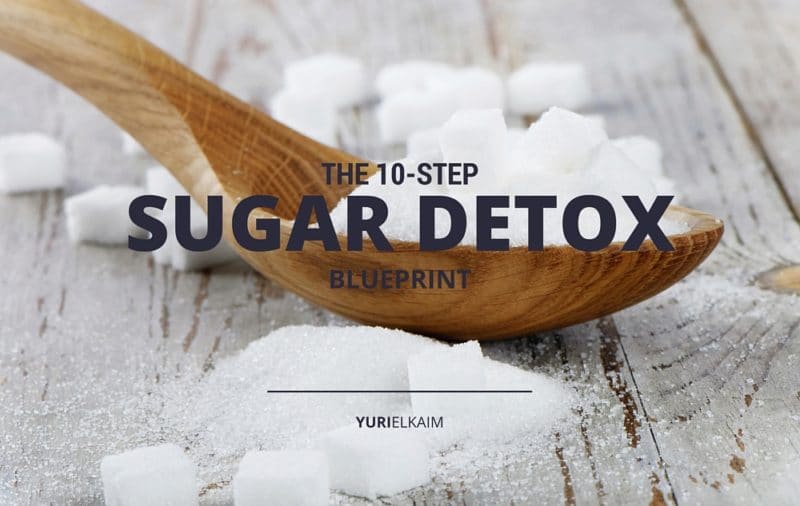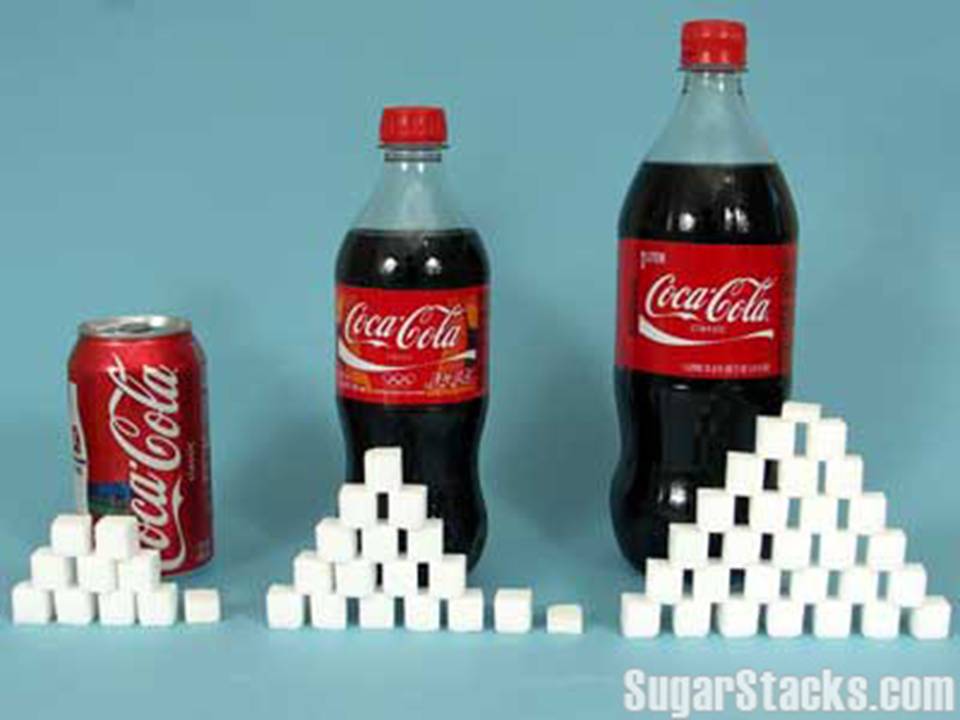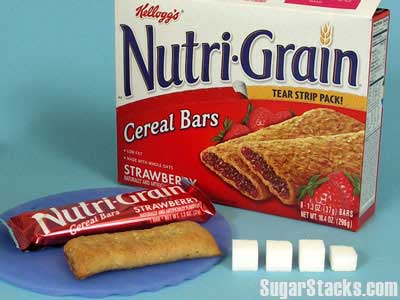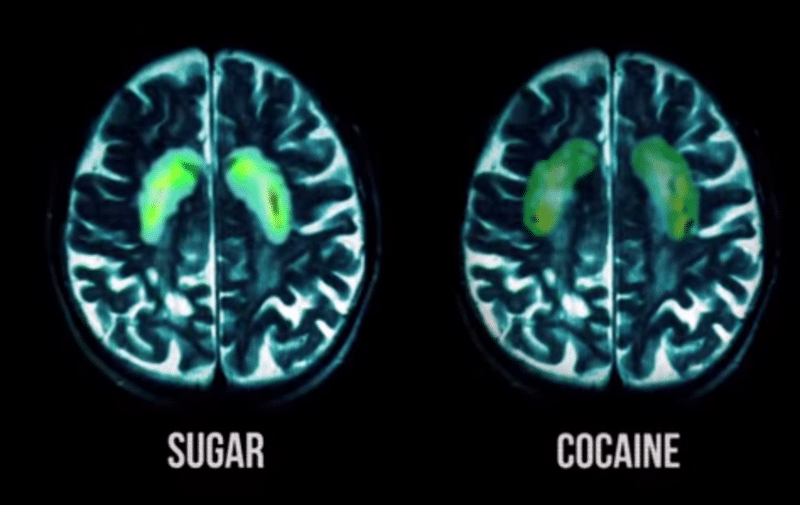
A proven sugar detox plan could mean the difference between you having an easier time losing weight, eating well, and feeling great or…
In this article
Continuing to suffer with candida overgrowth… debilitating cravings… and packing on pounds of excess fat.
So if you’ve been gripped by sugar’s deadly claws, the powerful 10-step sugar detox plan in this post will save your body and your health.
Why a Sugar Detox Plan is Needed (for Most People)
Most people are already aware that sugar is bad. Yet, overwhelming amounts of research remind us that sugar is strongly associated with obesity (1), cardiovascular disease (2), and terrible dental health because it provides easily digestible energy for the bad bacteria in the mouth (3).
And that’s just the tip of the iceberg – I’ll explain a few more reasons below. But since you’re here looking for how to detox your body from sugar cravings, you likely already know it’s pretty bad for you.
Yet when people talk to me about sugar and I tell them that they need to get it out of their lives, they usually have at least one of these things keeping them from doing it:
- they don’t know how bad sugar really is
- they don’t think they consume very much sugar
- or they’ve tried to quit and just found it too hard
Why Sugar is So Bad
A lot of people think that sugar really isn’t so bad, because… how bad can a natural food be?
But there’s a huge difference between naturally-occurring sugars in foods like fruit and “natural” sugar that’s been highly refined and added in huge quantities to almost every processed or packaged food in the supermarket.
Think about it this way: water is essential for good health and you should drink lots of it. But you can kill yourself by drinking more than your body can handle – a condition called “hyponatremia”.
An excess of sugar has been directly or indirectly blamed in numerous research studies for everything from heart disease to behavioral disorders to cognitive issues (4) and of course Type 2 diabetes (5). Sugar is directly connected to weight gain, and has even been linked to degenerative bones and connective tissue.
Sugar is harmful because it causes it’s own cycle of chronic cravings. You don’t lose bone density overnight. You don’t get fat because of one piece of candy. But feed your sugar cravings over a lifetime, and you’ll start to see serious health effects after just a few years.
If you’re here and considering a sugar detox, you’re probably already familiar with this Sugar Craving Cycle.
When you eat sugar—especially straight-up sugar, not fruit with fiber to slow that sugar down, but refined sugar and/or refined white flour, your body has to kick itself into overdrive.
The most harmful part of sugar, perhaps, is that it’s been touted as a substance that’s okay to eat. In fact, more than touted, it’s been turned into a multibillion-dollar market that is lauded, celebrated, and cherished in Northern American culture.
We’ve become so addicted to sugar that there are entire industries dedicated to getting us more of the sugar we want, whenever we want it.
Many breakfast cereals (marketed to kids, no less) contain 27 grams of sugar per serving—the equivalent of a chocolate candy bar! Commercials proffer candy as a midday pick-me-up snack, and companies hock treats to after-dinner dessert lovers.
Sugar has made its way into our entire day, and somehow, we’ve been taught to think that it’s okay.
How Much Sugar Are You Really Eating?
Even if you eat a fairly healthy diet, making sure you watch the calories and get at least some fresh veggies every day, you’re probably getting a lot more sugar than you think.
The average Westerner eats about 152 pounds of sugar each year. That’s about 22 teaspoons each day, every day for every person living in the US. But the situation is even worse with our children.
Kids consume an average of 34 teaspoons of sugar daily every day and for the first time in history, children as young as nine years old are being diagnosed with Type 2 diabetes. In fact, an estimated 25% of our teenagers are either pre-diabetic or diabetic.
[Related: How to Reverse Type 2 Diabetes: 3 Inexpensive Foods You Need to Know About]
Even if you don’t eat a lot of sweets or add sugar to your tea or coffee per se, you’re still probably eating plenty of sugar. And if you eat bread, cereal or processed foods, you’re also getting a ton of flour.
Here are a few examples from sugarstacks.com that show just how much sugar is lurking in common everyday foods and beverages:
For reference, ONE cube = 4 grams of sugar (FYI – a food can say “low in sugar” if contains less than 5 grams)



You may not know this, but a slice of bread (even whole wheat bread) actually raises your blood sugar more than table sugar does.
In fact, all refined flour has the same effect and we are eating it in huge amounts. Americans consume about 146 pounds of flour a year, per person. So that means we’re eating about one pound of sugar and flour combined for every person in the US.
Is Sugar as Bad (and Addictive) as Cocaine?
Do you know why it’s so hard for you to quit sugar?
Because sugar stimulates the reward center in your brain – called the nucleus accumbens – to release dopamine, which makes you feel “really good”.
When you eat foods that contain a lot of sugar, a massive amount of dopamine is released and as with any drug, the more stimulus you provide, the more you need over time to feel the initial effect due to a down-regulation of dopamine receptors.
That’s why sugar is really no different than, and functions similarly to, drugs of like cocaine and nicotine (6).
For some people there will even be anatomical changes in the brain when exposed to these sorts of foods which is part of the reason for developing full-blown addiction (7).

Sugar and flour addiction is very real and it’s not solely an emotional reliance on sweet treats or bagels. It is a recognized and well-documented physiological disorder involving both your neurotransmitters and your hormonal system.
In a recent study at Harvard, researchers discovered that a very sugary milkshake didn’t just cause a huge spike in blood sugar and insulin levels; it also stimulated huge changes in brain activity. (8) In short, the brain becomes addicted to that spike.
Don’t worry, there is hope.
I realize that this makes it sound even harder to get sugar out of your diet, but the truth is that you can do it.
The addiction to sugar and flour might be powerful, but studies have shown that our bodies and our neurological systems can be free of the addiction within a week to ten days of going cold turkey.
Of course, you first have to get through that 7-days and you’ll need help to do it. So here are 10 steps that will get you there.
10-Step Sugar Detox Plan
Step 1: Get all sugar and flour out of your house and out of your diet.
The easiest way to do this without having to spend hours reading labels is to eliminate anything that is packaged, canned, frozen (with a few exceptions, like frozen organic berries) or pre-cooked. Even potato chips have sugar in them.
There are so many names for so many common forms of sugar that it could take you forever to weed them out by reading labels, so just commit to eating fresh, whole foods and nothing else. That means meats, eggs, poultry, seafood, vegetables, fruits, nuts and seeds.
Step 2: Drink only water, unsweetened, fresh greens drinks and unsweetened herbal tea.
Sugar in liquid form is even worse for you than sugar in a Twinkie… because it goes almost immediately into your bloodstream. What makes it worse is that a sugary beverage like soda doesn’t fill you up and the energy only lasts a short time, so you drink another very shortly after. Even if you don’t drink soda, your beverages may be loaded with sugar.
Gatorade has 14 teaspoons of sugar per bottle. That’s only one less than a 20-ounce Coke. One of the problems is that sending this much sugar flying into your bloodstream at once actually inhibits the liver’s own fat-storage mechanism, leading to additional fat storage in the belly.
Not only that, but almost all sugar is 50% glucose (which spikes your blood sugar) and 50% fructose. The latter is just as problematic and often overlooked. Fructose (especially in hidden or liquid form) is bad news because it must first be metabolized before the body can use it as glucose.
However, because this is a “rate-dependent” process, too much fructose at once causes your liver to spit out triglycerides into your blood. Many of those TGs are also trapped in your liver, which can overtime lead to problems like “fatty liver disease”.
Step 3: Eat a high-protein meal first thing in the morning.
You’ve been fasting all night and that means that your carb levels are low and your insulin levels are high. This is the main reason so many people reach for something sweet first thing in the morning.
Combat this by getting plenty of protein instead. Not only will it fill you up without spiking your blood sugar, but it will also re-train your body to use protein as energy. You also want to make sure you get some healthy fats into your body as early as possible. Try a protein shake or have some eggs and a handful of walnuts.
Step 4: Get plenty of healthy carbs.
Not all carbs are the devil. We need carbs to function well and even to survive. But you have to eat the right carbs. That means non-starchy, low-sugar vegetables (in other words, no white potatoes or corn ever and skip the beets, winter squash, and sweet potatoes just for this detox period.
When you want something sweet, help yourself to fresh berries and lower-sugar fruits like apples, pears, and plums. By the way, during these ten days, you shouldn’t limit your consumption of produce at all. Eat until your eyes pop out if you have to. All the crunch will satisfy you during the first few days of cravings and you’ll probably drop a few pounds as well.
Step 5: Eat enough healthy fat.
Fat is not to blame for obesity – sugar and flour are. Fat actually helps steady your blood sugar levels, keeps you feeling satisfied, and is even used to transport vitamins and minerals throughout your body. You should have both protein and fat at every meal.
The best fats are nuts and seeds, nut butter (except for peanut butter), olive oil, coconut oil, palm oil, avocados, and the Omega-3 fats from pasture-raised meat and eggs and wild-caught seafood.
Step 6: Keep healthy snacks with you ALWAYS.
It’s as sure as Murphy’s Law. You will get your worst cravings when there isn’t a farmer’s market, fruit stand or healthy restaurant within five miles. In fact, there will probably be five fast-food restaurants, three vending machines and a donut shop just within sight.
So be prepared. Keep plenty of healthy snacks in your desk, in your car, in your laptop case and anywhere else you can stash them. Rely on nuts, seeds, apples, jerky, celery with nut butter, berries and other portable treats. It’s best to have a combination of protein, carbs and fats in every snack.
Step 7: Lower your stress level.
There’s a reason why stress makes many people reach for the junk food. Stress raises your cortisol level, causing hunger and stimulating fat storage at the same time. But de-stressing actually reverses that process.
[Related: 3 Ways Stress Causes Weight Gain]
Studies have shown that just doing some deep breathing can stimulate the Vagus nerve and change the focus of your metabolism from storing fat to burning it. Take a fun fitness class, go dancing, call a friend or watch a funny video. Have a nice long shower or curl up with a cat, a book or both. Whatever it takes, even just for a few minutes, to help you unwind and refocus.
Step 8: Get plenty or regular sleep.
Lack of sleep or even sleeping at erratic times also raises your cortisol level. It also interferes with your leptin and ghrelin levels, the hormones that control hunger and satiety. Get at least 7-9 hours every night and try to go to sleep at roughly (within an hour or so) at the same time every night. Many people find that doing this one thing ramps up their fat loss enough for them to lose weight without restricting calories.
Step 9: Start an exercise plan that includes strength training.
Strength training can not only help you on your sugar detox, but also help keep your blood sugar levels steady for good.
When you use your muscles, they require more glucose, which means less glucose in the bloodstream to elevate your blood sugar and fewer cravings for sugar later on when your blood sugar begins to crash. The more lean muscle you have, the better your body is at getting blood glucose out of your bloodstream and into your muscles. Exercise also release those feel-good endorphins so that you’re not so vulnerable to mood eating.
[Related: 5 No-Brainer Reasons to Start Bodyweight Training]
Step 10: Reduce inflammation from food sensitivities
Inflammation has been shown to cause unhealthy blood sugar levels and lead to insulin resistance and Type 2 diabetes. But illness or injury are not to blame for most inflammation – food sensitivities are. The most common problem foods are gluten and dairy, so just for these first ten days, kick them out of your diet as well.
You may not even realize you have a problem with one or both of these until a few days later, when you suddenly have a great deal more energy and far fewer symptoms such as bloating, gas, headaches and nausea. Doing a sugar detox may seem a little extreme to some and reasonable but incredibly difficult to others. But research supports the idea that we all need to get sugar and flour out of our diets for good.
With this 10-step plan you can quit sugar much more easily than you think, I promise. The first few days are the hardest, but if you follow all of these steps, you’ll start feeling amazing in no time.
Enjoy This Article?
Whether you’re looking to lose weight, have more energy, or get a better handle on your diet, getting rid of those crippling cravings (especially sugar) is a must.
Inside my “1-Day Craving Cure” I’ll show you a fail-proof plan to stop even the worst cravings. Click the banner below to get it for FREE.
